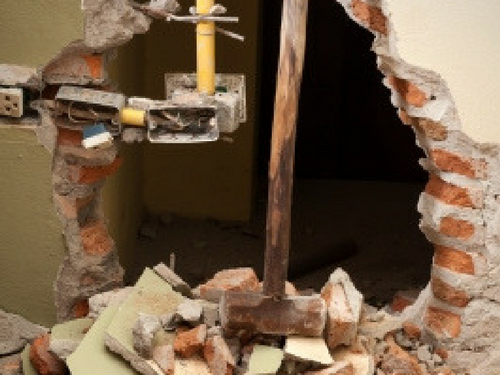Categories
How to claim repairs vs. capital expenditure

Property investors often ask me about the difference between repairs, maintenance and capital improvements for their investment properties. All are legitimate tax deductions, but how they are claimed can be different, and depend on a number of factors.
API Newsletter Article by Rebecca Mackie, published 20 August 2016
Repairs
A repair is where work is completed to fix damage or deterioration of a property or asset.
Examples include, but are not limited to, repairing an oven that has stopped working, patching a hole in the wall, fixing a leaking tap, replacement of fence palings and replacing a cracked tile.
Repairs are fully tax deductible in the year that they incurred. To be tax deductible, repairs (and maintenance) must relate directly to the wear and tear or damage that occurred due to using your property to generate rental income. This means that if you spend $475 having a couple of fence palings replaced, 100% of this amount is applied against your rent to decrease your taxable income for the year.
Maintenance
Maintenance involves work that fixes deterioration or prevents deterioration to the property.
Examples of maintenance can include, but are not limited to, lawn mowing and gardening services, painting the internal walls, servicing the heater, cleaning the gutters and having smoke detectors checked.
As with repairs, maintenance is also 100 per cent tax deductible!
Replacement assets
While repairing the oven in your investment property is tax deductible, if you have to purchase a new oven this new asset will need to be depreciated, while the old oven can be written off in full.
For example, when Jo purchased her investment property she had a depreciation report prepared. In that report the property’s oven was given a value of $1200 and Jo has been claiming a deduction for depreciation each year. After factoring in this deprecation, the oven now has a value of $696.
Jo has been renting the property out for a few years and the tenant has been in touch to let her know the oven is not working. The property manager organises for it to be serviced at a cost of $150 and it’s determined the oven cannot be repaired and needs to be replaced. Jo organises for a new oven to be installed at a cost of $1500 including installation.
In the current year’s tax return, Jo is able to claim the $150 service call. She is also able to claim the balance of $696 for the old oven that has been replaced. Jo’s accountant will add the new oven (including installation) to her depreciation schedule and begin depreciating the new oven from the date of installation.
Capital improvements
A capital improvement is defined as improving the condition or value of an item beyond its original state at the time of purchase.
Capital improvements include, but are not limited to, replacing the entire roof, replacing the fences, removing or adding walls, and building a deck or carport.
Capital improvements are depreciated over 40 years.
What happens when you renovate
If you renovate your investment property there will likely be a combination of all of work types described above.
For example, let’s say Jo decides to renovate the bathroom in her investment property. She needs to repair some of the plaster (deductible), she has the bath and shower area retiled (capital improvement), installs a new vanity (depreciable) and heated towel rail (depreciable). Jo has decided to keep the original tapware but these need to have new washers installed (maintenance).
So, as you can see, a simple bathroom renovation became slightly more complex when apportioning the correct tax deductions.
The first 12 months
When purchasing an investment property you may find there’s a need for a bit of work to be done before the property can be rented out. These initial costs (typically undertaken in the first twelve months of ownership) are treated as capital and cannot be claimed as repairs. This is because, in the eyes of the Australian Taxation Office, these costs have been factored into the purchase price.
An example might be where a reduced price is negotiated because the property requires restumping. Whilst restumping is a significant expense, this exception also applies to much smaller expenses such as rehanging doors or replacing damaged security screens. In most cases, these items will be able to be included in your depreciation schedule.
It’s not all bad news though, if you need to repair something that was damaged by the tenant (or a storm) during the first twelve months that would be a deductible repair.
Understanding how repairs and/or maintenance and capital expenditure are treated for tax purposes is something that your accountant should be well aware of to ensure you claim the property tax deductions in the correct manner to maximise your return.
Rebecca Mackie, Partner, Paris Financial
Image courtesy of phasinphoto at FreeDigitalPhotos.net
